Bulbs lend a spectacular display of colour to borders and containers. But if you want healthy plants and bountiful blooms, it’s important to plant themat the correct depth. So just how deep should you plant your flower bulbs?
Read on for our easy-to-follow guide on bulb-planting depths.
How deep should you plant bulbs?
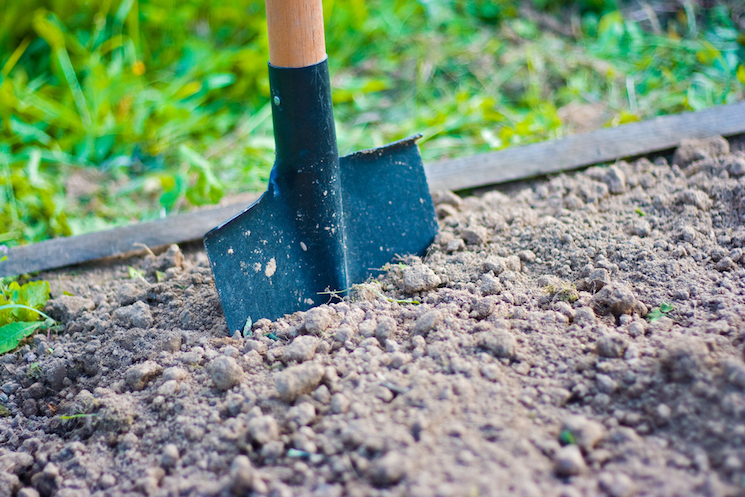
Image: Shutterstock
Once you’ve removed rocks and debris from your planting area, raked the soil and added any organic matter, it’s time to dig the hole. When it comes to planting depths, we’re talking about how deep the hole should be to the bottom of your bulb or basal plate. Generally, the bigger the bulb, the deeper the hole. But just how deep do you need to go?
There’s a lot of conflicting advice about how deep you should plant your bulbs. You’ll find gardeners recommending a depth that’s twice or three times the bulb’s height, while others believe you should plant at a depth 2.5 times the bulbs’ width.
For a clear, straightforward and stress-free method, print out and refer to our bulb planting-depth guide below. It shows exactly where the most popular flowering bulbs should be positioned so you don’t need to worry about getting it right. Generally, bulbs fall into three categories: near-the-surface bulbs; middle dwellers; and deep bulbs. Read on for more information on what to plant where.
Near the surface bulbs (0-10cm)
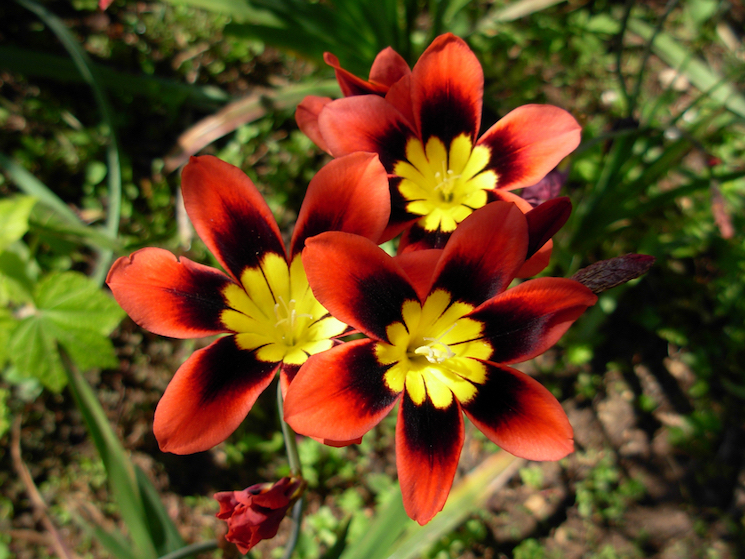
Image: Shutterstock
The smallest flowering bulbs need to be planted in the shallowest holes; at depths from just below the surface to 10cm below. Bulbs in this category include:
- glory-of-the-snow (chionodoxa)
- Dutch crocus (crocus vernus)
- golden crocus (crocus chrysanthus)
- snowdrops (galanthus)
- aconites (eranthis)
- harlequin flower (sparaxis)
- winter windflower (anemone blanda)
- dog’s-tooth violet (erythronium pagoda)
- early bulbous iris (iris reticulata)
- Siberian squill (scilla siberica)
- windflower (anemone coronaria)
Middle dwelling bulbs (10-20cm)
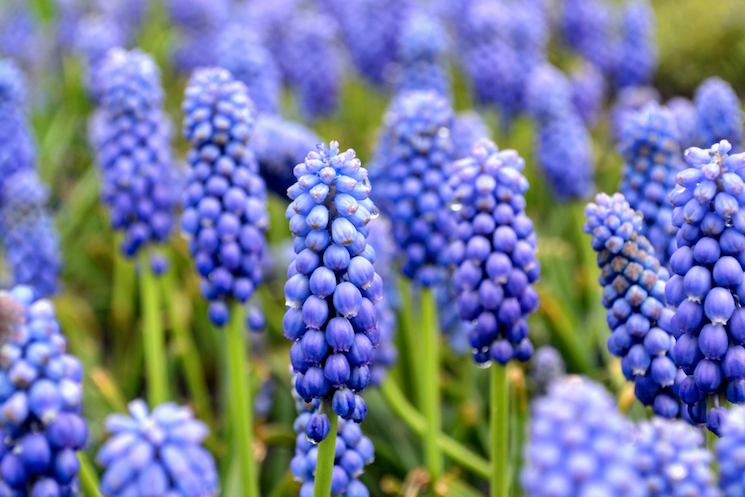
Image: Shutterstock
Next up are the middle dwellers; bulbs whose base needs to be at a depth of between 10 and 20cm. This category includes bulbs such as:
- yellow garlic (allium moly)
- Kara Tau garlic (allium karataviense)
- May queen (camassia leichtlinii)
- common camassia (camassia quamash)
- hyacinth ‘midnight mystic’ (hyacinthus orientalis)
- snake’s-head fritillary (fritillaria meleagris)
- Siberian fritillary (fritillaria pallidiflora)
- species tulip (tulipa speciosa)
- tulip (tulipa)
- narcissus
- grape hyacinth (muscari armeniacum)
- Spanish bluebell (hyacinthoides hispanica)
Deepest bulbs (20cm+)
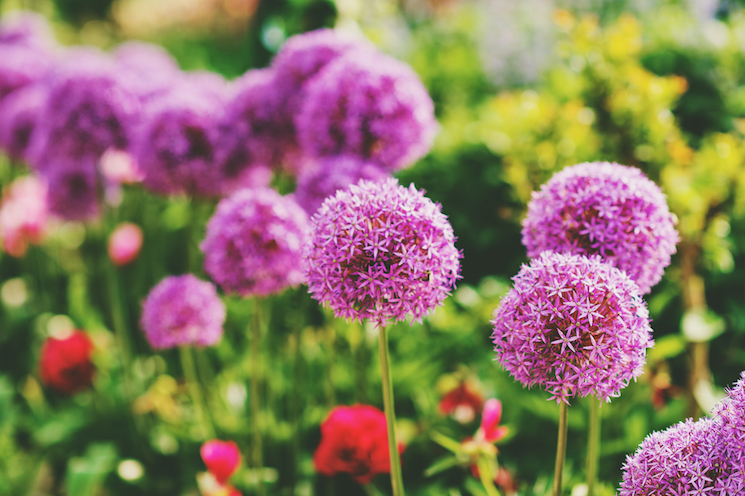
Image: Shutterstock
Last but not least are the biggest bulbs, and these require a depth of 20cm+. Among these you’ll find:
- giant allium (allium gigantem)
- summer snowflake (leucojum aestivum)
- crown imperial (fritillaria imperialis)
- paperwhite daffodil (narcissus grandiflora)
Check out this easy-to-follow visual guide to bulb depths for all your favourite flowering varieties. Definitely one to print out and pin to your shed door:
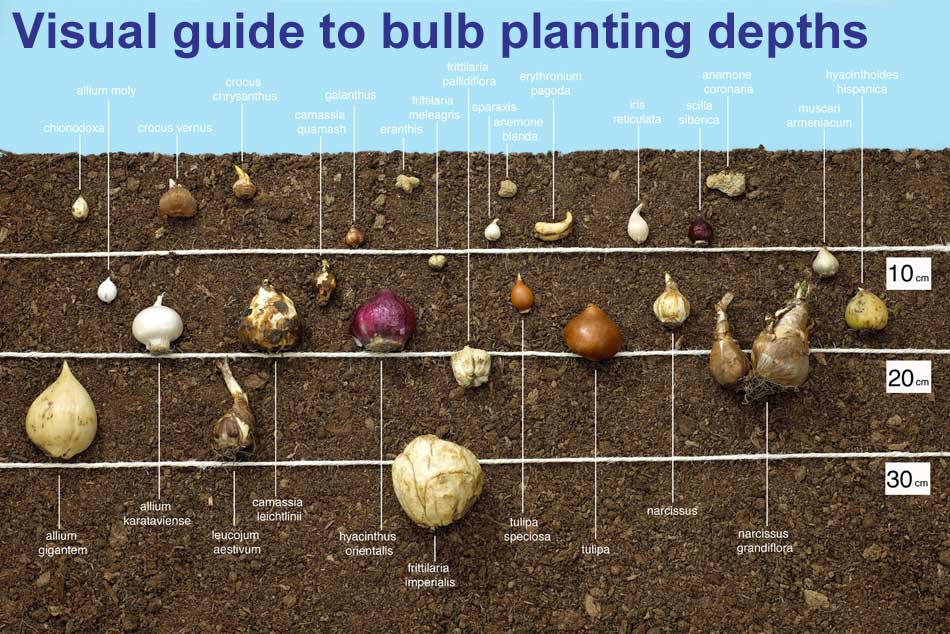
Lead image: Shutterstock

